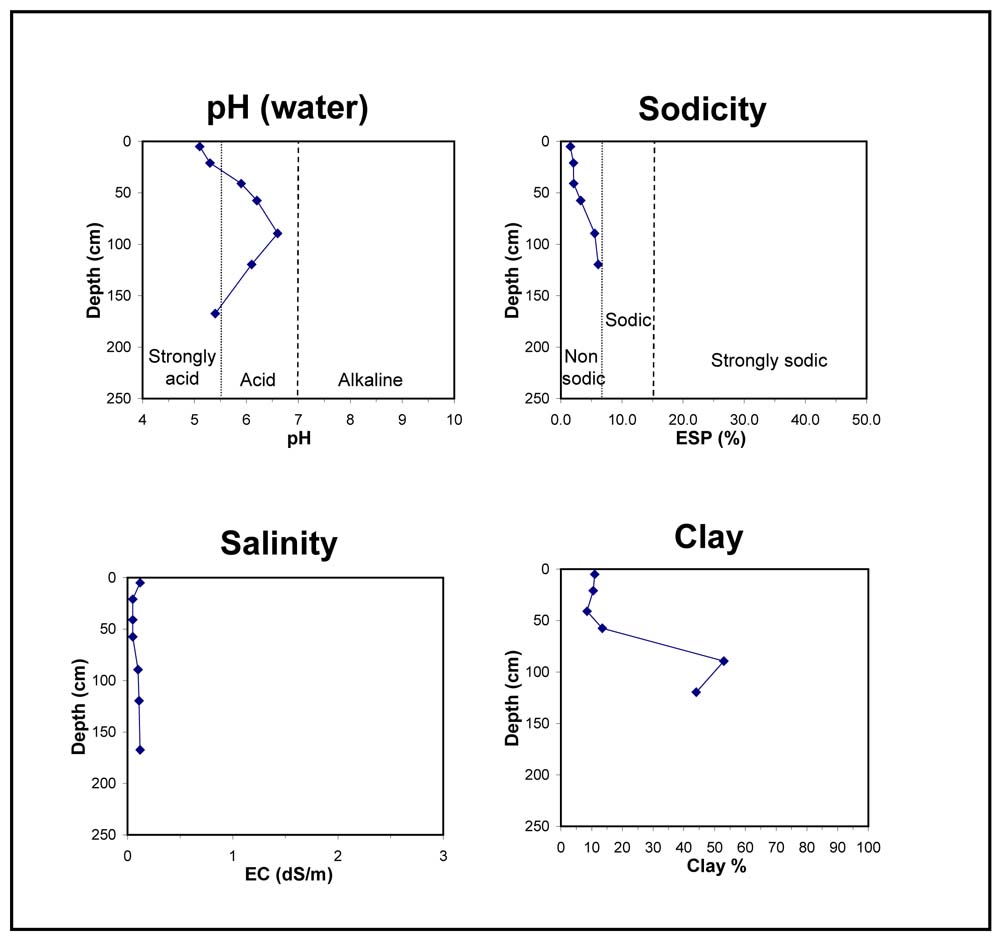GL82
| Site: GL82 | Land Unit: Strathdownie |
| Aust. Soil Class.: Bleached-Mottled, Eutrophic, Brown CHROMOSOL (confidence level 1) | |
| General Land Unit Description: This land unit comprises the Quaternary lacustrine geology south of the Glenelg River. The lacustrine deposits include lagoonal, swamp and local colluvial deposits formed in low-lying wetlands and depressions between stranded beach ridges. Parent material in this land unit comprises of sand, silt, sandy clay, peat, marl and freshwater limestone, occurring in relatively unconsolidated forms. The soils are variable throughout this land unit due to varying depositional environments. A common soil type is a strong texture contrast soil (Chromosol, Sodosol) commonly with a bleached A2 horizon and a mottled subsoil (indicative of impeded internal drainage). The sandy topsoil can be very deep in some soils. Vertosols are also common on the plains and swales in between the dunes. Podosols occur on the flats as well as on the dunes and that may have been mapped as part of this land unit due to restrictions of scale. Many of the soils are poorly drained and exhibit signs of a perched watertable. |
Site Description:
| Slope: 3% | Geology: Quaternary lacustrine |
| Landform pattern: Plain | Position in landscape: Flat |
| Internal drainage: Imperfectly drained |
Soil Profile Morphology
| A1 | 0-20 cm | Brown (7.YR4/2) sandy clay loam, weak to massive subangular blocky structure (2-10 mm), firm consistence when dry, very few ferruginous nodules, pH 5.1; clear transition to: |
| A21 | 20-35 cm | Greyish brown (10YR5/2) fine sandy clay loam, bleached (10YR7/1) when dry, massive structure, firm consistence when dry, very few ferruginous nodules, pH 5.3; clear transition to: |
| A22 | 35-55 cm | Brown (10YR5/3) sandy clay, bleached (10YR8/1) when dry, massive structure, very firm consistence when dry, very few ferruginous nodules, pH 5.9; gradual transition to: |
| Subsoil | ||
| B21 | 55-75 cm | Brown (10YR5/3) light medium clay, fine faint yellow and orange mottles are common, weak polyhedral structure (2-10 mm), very firm consistence when dry, a few small subrounded ferruginous nodules (2-6 mm), pH 6.2; diffuse transition to: |
| B22 | 75-110 cm | Brown (10YR5/3) medium clay, distinct medium orange and yellow mottles are common (5-15 mm), weak polyhedral structure, strong consistence when dry, a few small subrounded ferruginous nodules (2-5 mm), pH 6.6; gradual transition to: |
| BC | 110-140 cm | Light brownish grey (10YR6/2) heavy clay, many prominent medium to coarse orange and red mottles (2-20 mm), moderate angular blocky structure (2-10 mm), very firm consistence when dry, pH 6.1; diffuse transition to: |
| C | 140-200 cm | Many coarse red and orange mottles (5-15 mm), weak subangular blocky structure, very firm consistence when dry, pH 5.4. |
Key profile features:
- Strongly acidic topsoil
- Bleached A2 horizon
- Mottled subsoil




